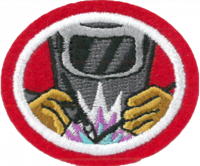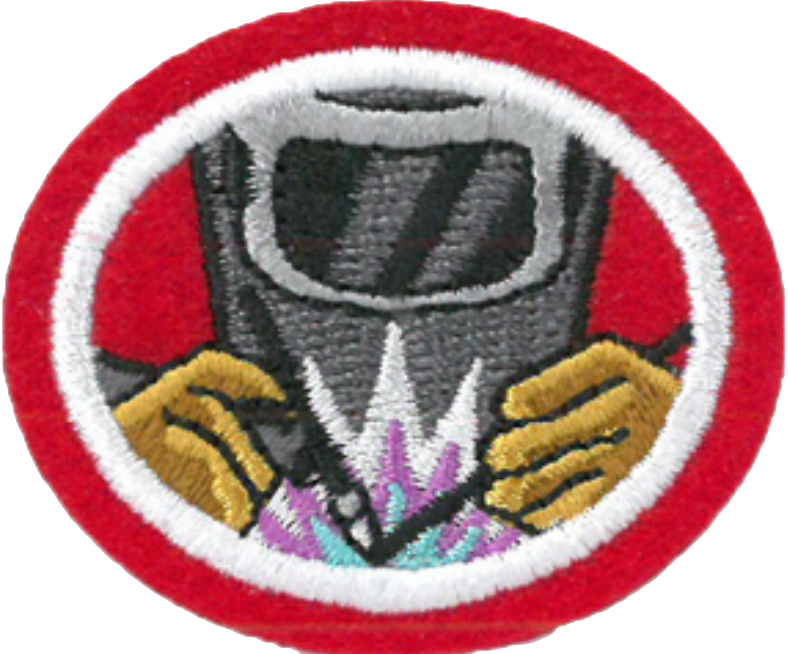Difference between revisions of "AY Honors/Welding/Answer Key"
Jomegat bot (talk | contribs) m (add dispreq for localized Note requirements) |
Jomegat bot (talk | contribs) (Bot: Automated import of articles *** existing text overwritten ***) |
||
| Line 1: | Line 1: | ||
| − | + | {{HonorSubpage}} | |
| − | |||
| − | |||
| − | |||
| − | |||
| − | {{ | ||
| − | |||
| − | |||
| − | |||
| − | |||
| − | |||
| − | |||
| − | |||
| − | |||
| − | }} | ||
| − | |||
| − | |||
<!--{{Honor Master|honor={{#titleparts:{{PAGENAME}}|1|3}}|master=Technician}}--> | <!--{{Honor Master|honor={{#titleparts:{{PAGENAME}}|1|3}}|master=Technician}}--> | ||
| − | |||
| − | |||
| − | |||
| − | |||
| − | |||
| − | |||
<section begin="Body" /> | <section begin="Body" /> | ||
{{ansreq|page={{#titleparts:{{PAGENAME}}|2|1}}|num=1}} | {{ansreq|page={{#titleparts:{{PAGENAME}}|2|1}}|num=1}} | ||
| Line 311: | Line 289: | ||
[[Category:Adventist Youth Honors Answer Book/noindex|{{SUBPAGENAME}}]] | [[Category:Adventist Youth Honors Answer Book/noindex|{{SUBPAGENAME}}]] | ||
<noinclude></translate></noinclude> | <noinclude></translate></noinclude> | ||
| − | + | {{CloseHonorPage}} | |
Revision as of 04:14, 19 March 2021
1
1a
A welding torch has a nozzle with one hole. The torch body mixes oxygen and acetylene, and you get your flame.
A cutting torch has several nozzles arranged in a circle, which emit an oxygen/acetylene mix (like the welding torch). In the center of this circle of nozzles is a larger hole where only oxygen is emitted. The outer holes heat the steel, and the inner hole cuts.
1b
The pressure regulators enable the user to reduce the high pressure contained in the cylinder to a usable working pressure. There are several handling and set up procedures that are important to the overall operation of the pressure regulator. The pressure regulator on each tank shows two things:
- Cylinder pressure (How much gas is in the cylinder)
- Working or line pressure
Installing the regulators
- Before installing the regulator, crack the cylinder valve to clean out any dirt or dust.
- Mount the regulator onto the cylinder.
- Ensure that the oxygen pressure regulator is on the oxygen tank.
- Do not over tighten regulator nut.
- Before opening the cylinder valve ensure that the pressure regulator screws are released (turned out).
- Never use oil or grease on the regulators.
- Frictional heat as a result of high pressures can cause oil to ignite and possibly cause an explosion.
1c
Oxygen hoses are green. Acetylene hoses are red.
- Hoses
The oxy acetylene welding hoses are made out of a durable rubber that is designed to withstand different pressures. There are several things to remember about the hoses:
- Red = Fuel
- Green = Oxygen
- Do not kink hoses
- Keep hoses away from work area
- Wrap hoses when not in use
- Keep hoses away from sparks and hot metal
- Hose fittings
- Acetylene fitting are notched
- Acetylene fittings are left hand thread
- Oxygen fittings are smooth
- Oxygen fittings are right hand thread
- Both tanks should always be fitted with anti flash back arrestors
1d
The oxygen and acetylene cylinders are designed to hold high-pressure gases. There are some important things to remember when using these cylinders:
- Cylinders must always be stood upright and be secured by a chain
- When not in use (regulator mounted) they must always have a valve protection cap in place
- Cylinders should be stored in a cool dry place away from direct sunlight or extreme cold
- Oxygen Cylinders
- Usually black in color, smaller in diameter and taller than Acetylene
- 2200 PSI when full
- The cylinder valve must be opened fully (double seated valve) or it could leak!
- You should not run an oxygen tank below 50 PSI.
- Acetylene Cylinders
- Usually red , large in diameter and short
- 250 PSI when full
- The cylinder valve should only be opened ¼ of a turn.
- The acetylene cylinder should never be laid down as this will result in the gas becoming unstable.
- You should not run an acetylene tank below 50 PSI.
2
When welding and brazing with an oxy-acetylene torch, acetylene should be set at 5psi. Oxygen should be set at 5 or 6psi, but no more.
When cutting with an oxy-acetylene torch, acetylene should again be set at about 5psi. Oxygen, however is set much higher, about 25psi, when cutting.
OXY ACETYLENE START UP PROCEDURE:
These steps must be followed to ensure safe usage of this equipment.
- Make sure pressure regulator screws are released (turned out) on both tanks.
- Standing to the side of the regulator, Slowly open the oxygen cylinder valve fully
- Standing to the side of the regulator, Slowly open the Acetylene cylinder valve ¼ turn
- With the welding or cutting adjustment valves open, quickly adjust the working pressure to the desired amount
OXY ACETYLENE SHUT DOWN PROCEDURE:
After the equipment has been used these steps must be followed to ensure safe storage:
- Close both cylinder valves
- Open the welding or cutting attachment valves to release regulator pressure
- Release pressure regulator adjustment screws
- Wrap up hoses
PROCEDURE:
Setting up the torch:
- Make sure the regulator adjusting screws on both the oxygen and acetylene regulators are backed out fully counter – clockwise
- Open the acetylene cylinder valve ¼ to ½ turn
- Open the torch acetylene valve about ½ turn. The acetylene valve lines up with the red hose
- Turn the acetylene regulator adjusting screw clockwise until 5 pounds pressure is read on the low pressure gauge
- Close the torch acetylene valve
- Open the oxygen cylinder valve all the way until the valve stops
Stand out of the way of the gauges when opening the oxygen bottle to prevent serious injury if the regulator valve fails - Open the torch oxygen valve about ½ turn
The oxygen valve lines up with the green hose - Turn the oxygen regulator adjusting screw clockwise until 5 pounds pressure is read on the low pressure gauge
- Close the torch oxygen valve
- Before lighting and using the torch, check the system for leaks
- Close the cylinder valves. If a cylinder gauge shows a pressure drop, there is a leak.
- If a leak is indicated, listen, smell and touch around all fittings and hoses, or use soapy water to find the leak.
LIGHTING & ADJUSTING:
- Proper eye protection must be worn (shaded torch welding / cutting glasses)
- Proper non – flammable coveralls must be worn
- Remove butane lighters from pockets
- Put on proper eye protection and protective clothing
- Open the torch fuel valve no more than ½ turn
- Position the tip of the torch down and away from your body and hold the striker in your other hand so only the head of the striker is in front of the torch tip
Practice using the striker with the fuel shut off - Use the striker to light the torch
Never use a lighter, matches, or other burning material to light the torch - Adjust the torch fuel valve until the flame gives off little black smoke
- Slowly open the torch oxygen valve to create a neutral flame
Neutral flame: (equal amounts of oxy/acetylene) has a rounded white inner cone used for fusion welding steel.
Carburizing flame: (less oxygen) has a longer feathered blue inner cone a slightly carbonizing flame is used for brazing.
Oxidizing flame: (excessive oxygen) has a short pointed white inner cone used for special purposes such as brazing with bronze filler rod.
SHUTTING DOWN:
- Shut off the torch fuel valve first, which immediately extinguishes the flame
- Shut off the torch oxygen valve
- Close the acetylene cylinder valve
- Close the oxygen cylinder valve
- Bleed the acetylene line by opening the torch acetylene valve until the pressure reads zero on both the high and low pressure gauges
(If the torch will be left for more than a few minutes and then reused, both lines must be bled before lighting the torch again) - Turn the acetylene pressure regulating screw counter – clockwise all the way out
- Close the torch acetylene valve
- Bleed the oxygen line by opening the torch oxygen valve until the pressure reads zero on both the high and low pressure gauges
- Turn the oxygen pressure regulating screw counter – clockwise all the way out
- Close the torch oxygen valve
There will be no horseplay.
3
This requirement demonstrates one's skill in working in darkness, such as in an emergency. All acetylene connection threads are left-handed, while all oxygen connection threads are right-handed.
4
5
6
7
SAFETY EQUIPMENT
The correct safety equipment must be used when using the oxy acetylene equipment or electric welding.
- Wear shaded safety glasses
- Use gloves during torch operation and when handling hot metals
- Follow all safety rules for this and all other equipment
OXY-ACETYLENE SAFETY
- You must be trained and authorized before using the oxy-acetylene torch
- Make sure you do not have a lighter in your pocket – they can explode!
- Ensure gas bottles are upright and secure at all times
- Do not allow oil or grease to come in contact with hoses or equipment
- Perform all welding and cutting in the welding area – ventilation must be turned on
- Approved goggles and spark resistant clothing must be worn when using the oxy-acetylene torch
- Do not weld or cut a closed container
- Make sure the work area is clear
- Open the cylinder valves slowly – stand to the side!
- Light the torch with the striker – do not use a match or a lighter
- When welding, bend the end of the rod to identify the hot end and to prevent eye injury
- When finished turn off the torch valves, turn off cylinder valves, then go back to the torch and bleed both lines
- Keep the cylinder caps on when not in use
8
Oxy-acetylene welding uses two gases in the process of producing a weld. Acetylene, which is the fuel and is the main source of heat, and oxygen, which is a propellant.
Electric arc welding does not use gas to produce a weld like oxy-acetylene welding does. Electric arc welding uses an electric current to produce its welds. A clamp, with the one side of the current flowing through it, is attached to a base plate. Then the another clamp/nozzle, with the other side of the current flowing through it, is held in a hand. A filler rod is then used to complete the circuit and create the heat needed to heat the pieces of metal being joined and melt the filler rod (used to bind the pieces of metal together).
9
10
Note
^ These are minimum requirements; additional welding is encouraged
References
- Steelworker, Volume 1, A U.S. Navy Training Manual. As an original document produced by the U.S. government, this publication is in the public domain and has a lot of information that should be incorporated into this text.


